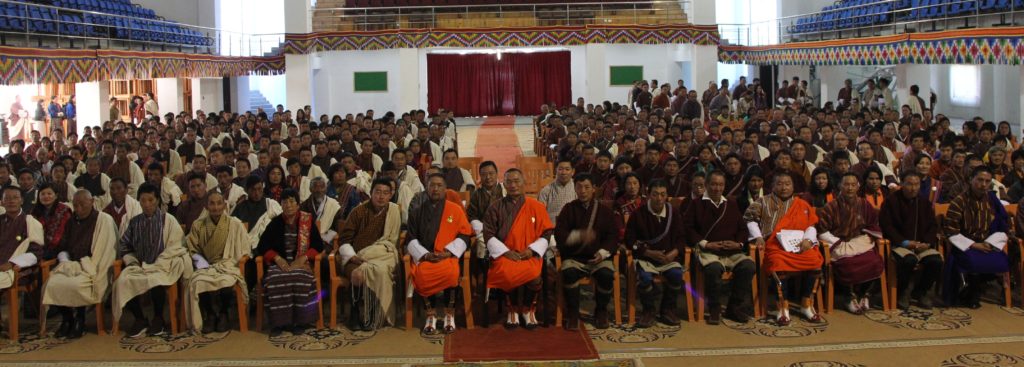
By Tshering
More than 353 yak herders from across the country came together in Thimphu and had firsthand discussion on their development priorities in the first ever consultative workshop with the government on October 18.
The workshop was organised to give awareness on existing legislation on conservation & development programs and to come up with holistic plans and strategies for an integrated highland development.
The participants were represented by wide range of age groups ranging from mere 18 year to 83 year old depicting a good succession to the highland farming system.
Lyonchhen shared that the highlanders living on the northern frontiers have a critical responsibility to ensure border security. He urged the meeting to deliberate plans to develop and promote highlanders’ livelihoods and their unique culture.
Lyonchhen also urged the participants to share their views and concerns with the officials so that their feedback are taken into consideration by the concerned ministries/agencies and incorporated into the developmental plans and programs.
The most amazing aspect of the highlands of Bhutan is the harmonious co-existence of Transhumant Yak herding system and protected areas.
As of today there are 1,157 yak herding households with 40,438 number of yaks spread across 11 Dzongkhags. The yak provides the primary sources of livelihoods to the highlanders. The rich and unique culture of these highlands upholds the identity of the nation.
However, though the yak population remained almost constant over the last decade, the number of yak herders has decreased mainly due to access to other livelihood opportunities in lowlands.
Of recent past, Cordyceps has become the major source of income. There are about 3,433 collectors from 17 Geogs in 7 Dzongkhags. Annual average income from cordyceps was about Nu 145 million from 2004 to 2015.
Similarly, highlands has lots of potentials for sustainable income and livelihoods with its popular trekking routes across northern region which offer future potentials for eco-tourism development. The richness of bio-diversity also offers opportunity for bio-prospecting especially on medicinal plants and herbs.
The Highlands of Bhutan is bestowed with rich biodiversity and home to four national parks, two wildlife sanctuaries and the country’s only nature reserve. Thus, it hosts majority of the country’s protected areas and many globally endangered flora and fauna.
Some of the rare faunal species seen in the highlands of Bhutan are tiger, snow leopard, takin, blue sheep, Tibetan wolf and several species of birds. The origin of almost all river systems of Bhutan are from these areas. The huge highland livestock population of these areas leading Bhutan to third position in the world is being supported by 1.3 million acres of Tsamdro.
Highland development is proposed as one of the “Flagship Programs” in the 12th FYP. The workshop is expected to serve as a very important basis of consultation for various stakeholders for a comprehensive planning process.
The workshop was attended by various stakeholders including Gross National Happiness Commission Secretariat, Ministry of Health, Ministry of Education, National Land Commission and Ministry of Home and Cultural Affairs.
The workshop helped garner important issues for developing a comprehensive and integrated conservation plan. Of all the issues discussed, the highlanders will go back home with clear information about the nationalization and leasing processes of Tsamdro which had remained a kind of vague since the nationalisation process started since 2014.
His Majesty The King granted an audience to the participants and they were also provided with free health checkups and and had opportunity to offer Ku-sung-Thug Mendrel to His Holiness the Je Khenpo at Kuenselphodrang.
The workshop was organized by Ministry of Agriculture and Forests.
 BHUTAN TODAY The New Perspective
BHUTAN TODAY The New Perspective
